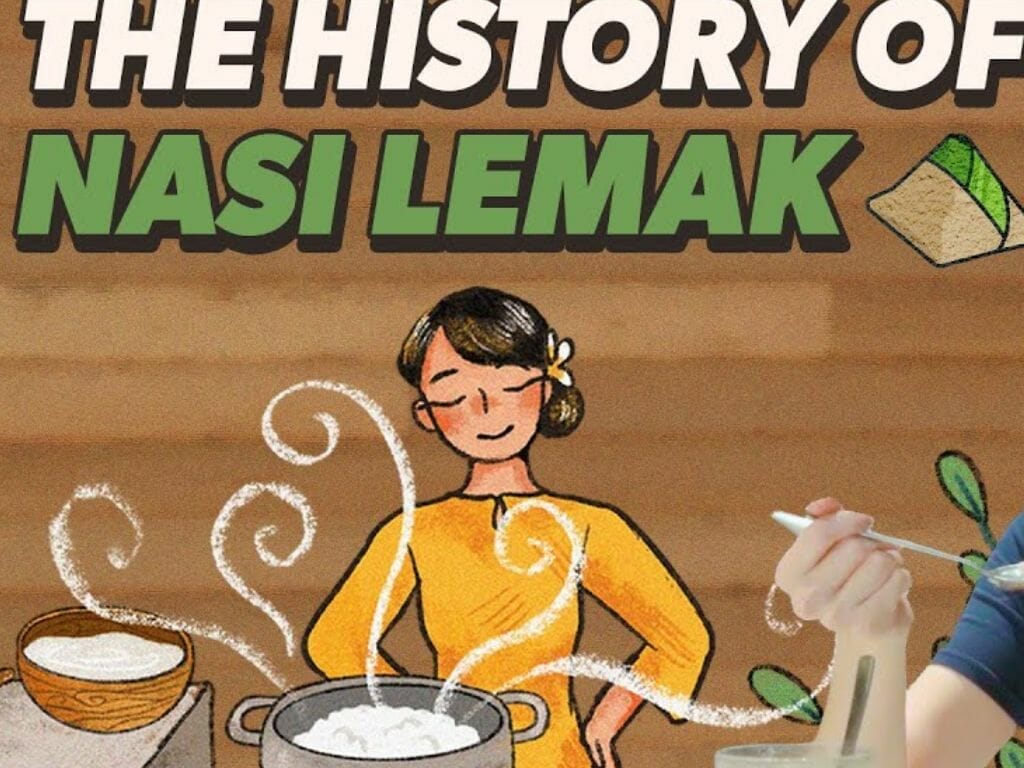10 Facts That Unearth the History of Nasi Lemak in Singapore
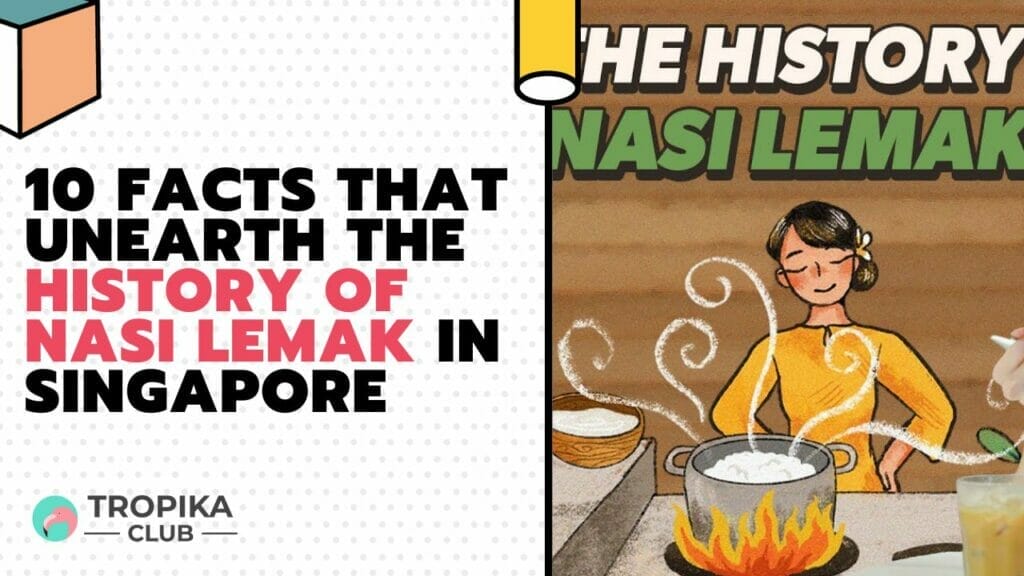
No Time to Read? Here’s a Snappy Summary of This Article
- Nasi Lemak’s Malay Roots: Nasi Lemak, Singapore’s beloved dish, has its origins in Malay cuisine, showcasing rich cultural influences.
- Colonial Influence: British colonial rule in Singapore introduced ingredients like cucumber and peanuts, enhancing Nasi Lemak’s flavor profile.
- Diverse Ingredients: Nasi Lemak’s appeal lies in its diverse ingredients, from fragrant rice to spicy sambal and crispy anchovies.
- Hawker Center Staple: It’s a quintessential hawker center dish, affordable, accessible, and cherished by locals and tourists alike.
- Evolving Flavors: Over the years, Nasi Lemak has evolved, with variations incorporating chicken, rendang, and even vegetarian options.
- Culinary Innovation: Nasi Lemak’s adaptability and fusion potential highlight Singapore’s dynamic food scene, constantly reinventing traditional flavors.
Table of Contents
- No Time to Read? Here’s a Snappy Summary of This Article
- 1. The Origins of Nasi Lemak
- 2. The Quintessential Ingredients
- 3. Cultural Significance
- 4. Evolution Over Time
- 5. Street Food to Fine Dining
- 6. The Influence of Migration
- 7. Nasi Lemak in Popular Culture
- 8. Healthier Versions
- 9. The Global Reach
- 10. Preserving Tradition
- Meanwhile, Check Out Tropika Club’s Ecosystem of Websites
Introduction
Nasi Lemak is more than just a dish; it’s a cultural emblem that represents the rich tapestry of Singapore’s diverse culinary landscape. A simple yet hearty meal, Nasi Lemak has been a staple in Singaporean households for generations. But how much do we really know about this beloved dish? In this article, we explore 10 intriguing facts that unearth the history of Nasi Lemak in Singapore.
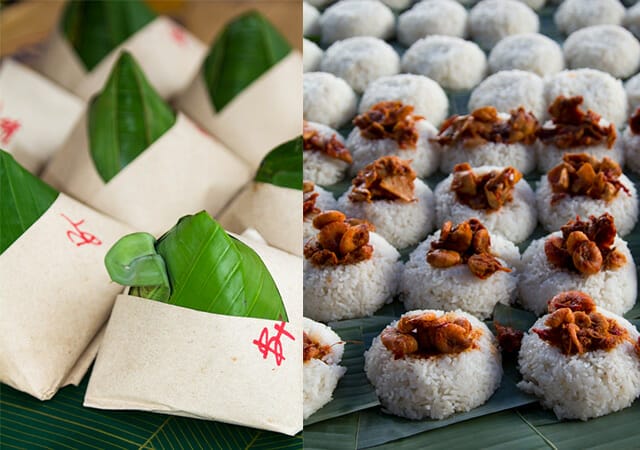
1. The Origins of Nasi Lemak
Nasi Lemak is believed to have originated from the Malay Peninsula, making its way into Singapore through the cultural exchange that has always been a part of the island’s history. The term “Nasi Lemak” translates to “rich rice,” a nod to its creamy, coconut-infused texture. This dish was initially a farmer’s meal, providing the necessary sustenance for a long day in the fields.

2. The Quintessential Ingredients
The basic components of Nasi Lemak include coconut milk-infused rice, sambal (spicy chili paste), fried crispy fish, hard-boiled egg, and cucumber. These ingredients not only offer a balanced meal but also represent the multicultural facets of Singapore. Over time, various communities have added their own twists, making the dish even more diverse.

3. Cultural Significance
Nasi Lemak holds a special place in the hearts of Singaporeans. It’s a dish that transcends ethnic boundaries, enjoyed by Malays, Chinese, Indians, and Eurasians alike. The dish is often served at communal gatherings, symbolizing unity and shared heritage.

4. Evolution Over Time
While the basic ingredients have remained relatively consistent, Nasi Lemak has seen numerous adaptations in Singapore. From luxury versions with lobster and truffle to fast-food renditions, the dish has evolved while maintaining its core essence.
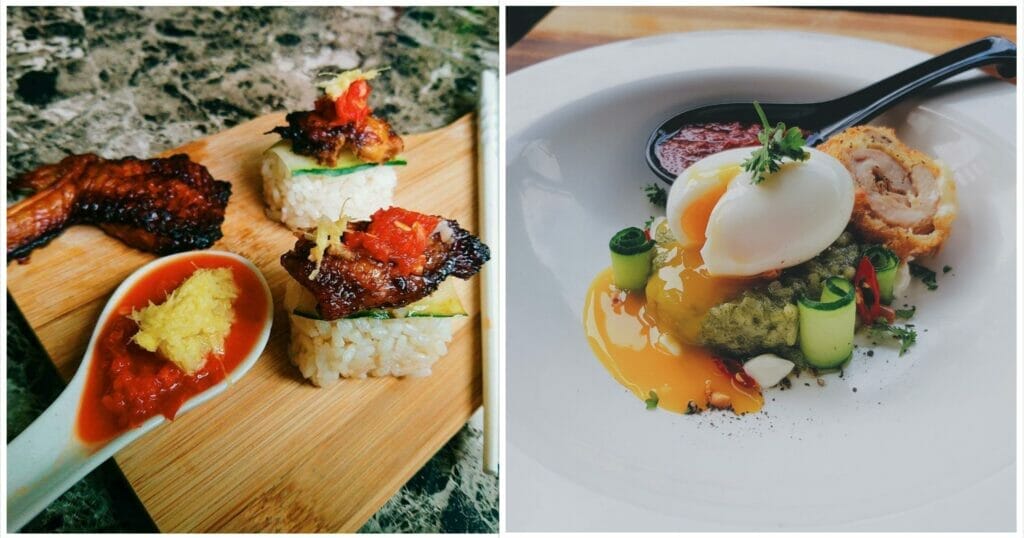
5. Street Food to Fine Dining
Once considered a humble street food, Nasi Lemak has found its way into fine dining establishments in Singapore. Chefs are experimenting with gourmet ingredients like foie gras and wagyu beef, elevating the dish to new culinary heights.

6. The Influence of Migration
The migration patterns in Singapore have influenced the variations of Nasi Lemak. The dish has absorbed flavors from Indonesian, Thai, and even Chinese cuisines, making it a true melting pot of tastes.
_
Read Also:
The Best Nasi Lemak in Singapore
_
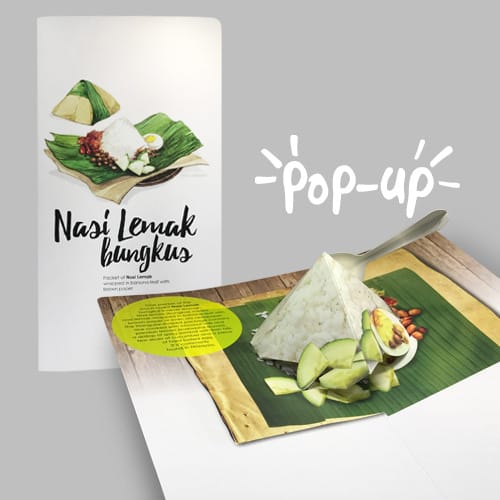
7. Nasi Lemak in Popular Culture
Nasi Lemak is not just confined to the dining table; it has made appearances in Singaporean literature, movies, and even political discourse. Its ubiquity is a testament to its cultural importance.
8. Healthier Versions
In line with Singapore’s push for healthier eating, some establishments have started offering versions of Nasi Lemak with brown rice, less oil, and more vegetables. These options cater to the health-conscious without compromising on taste.

9. The Global Reach
Nasi Lemak is not just a Singaporean or Malay delicacy; it has global appeal. From London to New York, this dish has been embraced by various cultures, further solidifying its status as a culinary icon.

10. Preserving Tradition
While innovation is crucial, many Singaporeans believe in preserving the traditional recipe of Nasi Lemak. Family recipes are passed down generations, ensuring that the original flavors and techniques are not lost to time.
Conclusion
Nasi Lemak is not merely a dish but a narrative of Singapore’s rich cultural and historical landscape. From its humble beginnings to its current status as a global culinary phenomenon, Nasi Lemak encapsulates the spirit of Singapore in every bite. As we continue to innovate and adapt, let us also take a moment to appreciate and preserve the rich history of this incredible dish.

Frequently Asked Questions (FAQ)
1. Q: Is Nasi Lemak only available in Singapore?
A: While Nasi Lemak is popular in Singapore, it’s also a beloved dish in Malaysia and other Southeast Asian countries. Each region has its unique twist on the dish.
2. Q: Can I find vegetarian or vegan Nasi Lemak options?
A: Yes, many places offer vegetarian or vegan Nasi Lemak, often substituting meat with tofu, tempeh, or plant-based proteins.
3. Q: Are there any famous hawker centers in Singapore known for their Nasi Lemak?
A: Yes, popular hawker centers like Adam Road Food Centre, Chong Pang Nasi Lemak, and Ponggol Nasi Lemak are renowned for their delicious Nasi Lemak.
4. Q: Can I order Nasi Lemak for delivery or takeout in Singapore?
A: Absolutely! Many restaurants and hawker stalls offer Nasi Lemak for delivery and takeout, making it accessible wherever you are in Singapore.
5. Q: Can I make Nasi Lemak at home?
A: Yes, you can! There are plenty of Nasi Lemak recipes online, and you can easily recreate this dish in your kitchen, customizing it to your taste.
6. Q:: Is Nasi Lemak a breakfast dish or can I have it any time of the day?
A: Traditionally, Nasi Lemak is a breakfast dish, but it’s so beloved that you can enjoy it at any time of the day in many eateries across Singapore.
By providing answers to these frequently asked questions, we aim to offer readers a comprehensive understanding of Nasi Lemak, its cultural significance, and where to enjoy it in Singapore, making their culinary exploration even more enjoyable.

Have an Article to Suggest?
Tropika Club is always looking for new and exciting content to feature in their magazine and they value the input of our readers. If you have any noteworthy content or articles that you believe would be a great addition to Tropika Club’s magazine, we are open to suggestions and encourage you to reach out to us via email at [email protected]. By doing so, Tropika Club values your expertise and knowledge in the matter and appreciates your willingness to help. We will review your recommendations and update our list accordingly
Meanwhile, Check Out Tropika Club’s Ecosystem of Websites

Tropika Club Magazine – Tropika Club Magazine is a Singapore-based publication that features articles on a wide range of topics with a focus on local businesses and content for the region. The magazine emphasizes supporting local businesses through its #SupportLocal initiative, which includes coverage of everything from neighborhood hawker stalls to aesthetic clinics in town. In addition to highlighting local businesses, Tropika Club Magazine also covers a variety of local content, including beauty, lifestyle, places, eats, and what’s on in Singapore and the Asia Pacific region.
Tropika Club Deals – Tropika Club Deals is a leading online deals and voucher shopping site in Singapore, offering amazing discounts on beauty, wellness, and fitness products and services. It’s the perfect platform for customers who want to discover the best deals without having to commit to a specific appointment date and time. These deals are available at major beauty stores, facial salons, hair salons, and other brands in Singapore, with no minimum spend required. Choose from guaranteed discounted deals in the categories of hairstyling, hair removal, facial & aesthetics, body slimming, brows & lashes, nails & makeup, massage & spa or fitness & wellness. Tropika Club Deals is also ideal for customers who want to buy vouchers as gifts or to use for the future. So whether you’re looking to save money on your next haircut or want to treat yourself to a relaxing massage, Tropika Club Deals has got you covered with the best voucher and coupon deals in Singapore!



